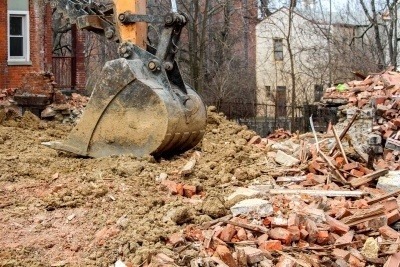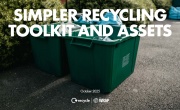England’s falling material footprint linked to socioeconomics rather than circularity
New data released by Defra reveals that England’s material footprint fell to 783 million tonnes in 2020.
 The figure represents an 11.1 per cent fall from 2019, where England's material footprint sat at 880 million tonnes.
The figure represents an 11.1 per cent fall from 2019, where England's material footprint sat at 880 million tonnes.
‘Material footprint’ refers to the total allocation of primary raw material extraction to meet the final demand for goods and services within a country.
The data was calculated using a methodology developed by the University of Leeds on behalf of Defra, which builds on similar approaches for determining the country’s carbon footprint data.
The data sees the continuation of a downward trend – with the exception of a few outliers – in England’s material footprint since the year 2001. Notably, the 2020 data released by Defra marks a decrease in material footprint of over a third (35 per cent) in comparison to the figure’s peak in the year 2004.
Defra highlighted that England’s material footprint was primarily associated with household consumption (47 per cent), followed by gross fixed capital formation (31 per cent) and government expenditure (20 per cent).
The majority of England’s material footprint – approximately 55 per cent – stems from non-metallic metals, such as sand and gravel used in construction. Biomass followed, accounting for 24 per cent of the figure.
The data from 2020 saw fossil fuels account for just 15 per cent of England’s material footprint, a decrease from 22 per cent in 2001, on account of the fossil fuel footprint having fallen 42 per cent over the same period.
Are the downward trends in England’s material footprint sufficient to reach net zero?
Under the ‘Net Zero Target’, the UK government has pledged to ensure that greenhouse gas emissions are reduced by 100 per cent in comparison to 1990 levels by the year 2050.
Though the decrease in England’s material footprint announced today (9 August) by Defra appears promising, whether this trend is sufficient to meet the government’s targets is questionable.
Defra’s statistics have historically demonstrated that the country’s material footprint is considerably affected by global financial shocks.
For example, following the 2008 financial crisis, a 10.7 per cent decrease in England’s material footprint ensued, causing the figure to fall below 1000 million tonnes for the first time in six years. The figure remained low in the years following the crisis. Comparable decreases were experienced in 2015 following the instability of global stock markets.
The 2020 figure announced by Defra represents a similar percentage decrease and may be representative of the fallout experienced due to the COVID-19 pandemic rather than a real shift towards net zero or the development of the circular economy.
Accordingly, upcoming figures may demonstrate the same trend as the global economy recovers from the pandemic, whilst genuine progress towards the circular economy in England remains slow.
The continuation of the downward trend in England’s material economy will therefore likely be largely dependent on socioeconomic conditions. In particular, should recycling rates remain low – England’s recycling rate has currently stagnated at 44.1 per cent – genuine progress towards shrinking England’s footprint appears unlikely.
Indeed, experts have displayed scepticism regarding the significance of Defra’s figure. Speaking on the data, Diane Crowe, Head of Group Sustainability at Reconomy commented: “As a nation, demand and consumption for raw materials is huge. While we are making some progress on reducing this demand it is clear that there is only so far we can go to reduce consumption.
“The key to developing a more sustainable economy will rely on increasing circularity. By that, I mean improving how we recover, recycle and reuse the raw materials that we do use so that they remain within the economy and protect the finite resources that we have.
“The latest data suggests that the UK’s economy is 7.5 per cent circular, meaning over 90 per cent of all economic activity requires the consumption of virgin materials. By increasing circularity, we can positively impact our ability to meaningfully reduce the amount of CO2 produced by economic activity and minimise our impact on climate change.”









